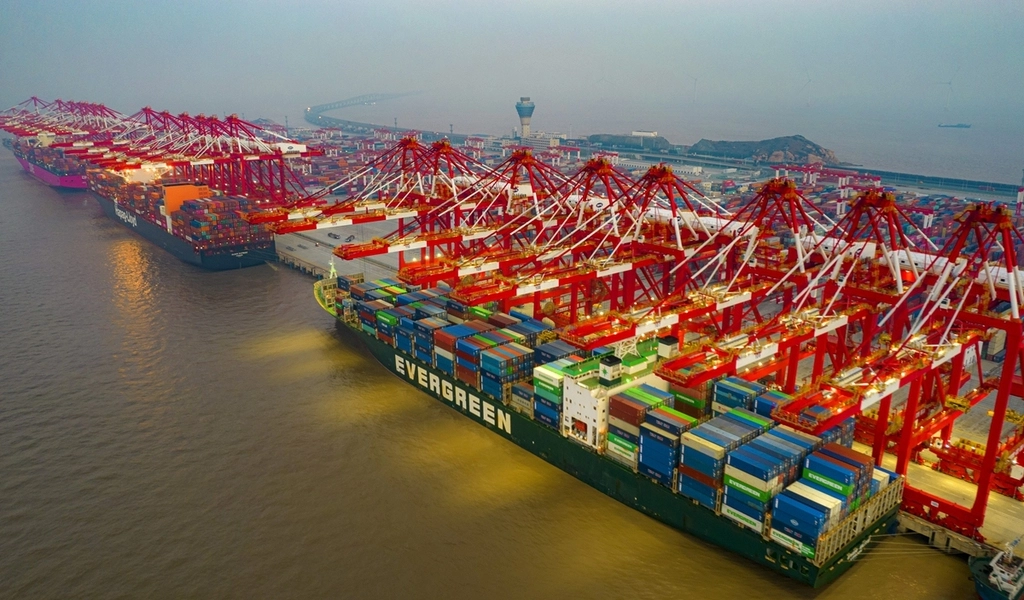China, a global economic powerhouse, has faced its fair share of economic challenges in recent years. However, amidst these setbacks, its sea trade growth has remained surprisingly resilient.
With its logistics industry booming and a vast array of shipping jobs available across the globe, China’s resilient sea trade growth is down to a variety of factors. In this article, we’ll be delving into what has contributed to China’s robust maritime trade expansion.
The State Of China’s Economy In 2023
In 2023, China’s economy faced a number of setbacks, but an upsurge in imports became a significant positive influence.
According to Richard Scott FICS of Spinnaker, “Looking at four commodities together comprising over two-thirds of all China’s seaborne cargo imports, big increases were seen in the January-September period of 2023, compared with the same period of last year.
Iron ore – the largest individual import trade – was up by 7% to 877 million tonnes, crude oil was up by 15% at 424mt, coal was 51% higher at 348mt, and soyabeans increased by 14% to 78mt.”
This highlights a significant impact on China’s sea trade, despite the economic challenges faced across their property sector and subdued consumer spending throughout the year.
During a period when the economy was struggling, there has been a noteworthy increase in the import of certain commodities in China. There are four commodities that make up more than two-thirds of all cargo imports by sea in the country. These are:
- Iron ore
- Crude oil
- Coal imports
- Soybeans
All four saw significant growth in the period of January to September 2023 compared to the same period last year. The coal imports were driven by a higher demand for energy as well as a reduction in hydroelectric power supplies.
The crude oil also rose due to rising energy demands as the country’s economy began to pick back up, with importers enjoying attractive oil prices.
But aside from changing demand, there are other factors that have helped China’s sea trade to grow while other economic areas have faltered.
Strategic Geographic Advantage & Belt and Road Initiative
China’s extensive coastline along the Pacific Ocean, the South China Sea, and the East China Sea provide a significant strategic advantage for maritime trade. The country’s ports are well-connected to major global trade routes, allowing for efficient and cost-effective transportation of goods.
China’s ambitious Belt and Road Initiative, launched in 2013, has played a pivotal role in expanding its sea trade. This massive infrastructure project aims to connect China with Europe, Asia, and Africa through a network of land and sea routes, enhancing trade connectivity and reducing transport times.
China actually owns (in full or partially) almost half of the world’s 75 leading container ports outside of the Chinese mainland, and more than half of China’s overseas maritime assets sit on major shipping lanes. These include the Indian Ocean, the Red Sea, the Suez Canal, and the Mediterranean Sea.
Investment in Port Infrastructure, Trade Agreements & Partnerships
China has consistently invested in modernising and expanding its port infrastructure. Ports like Shanghai, Shenzhen, and Ningbo-Zhoushan rank among the world’s busiest and most technologically advanced, handling a substantial portion of China’s sea trade.
Alongside this, China has actively pursued trade agreements and partnerships with countries worldwide, promoting trade liberalisation. Agreements like the Regional Comprehensive Economic Partnership (RCEP) have strengthened China’s trade ties with nations across the Asia-Pacific region.
To mitigate economic risks, China has diversified its trade partners. While the United States remains a significant trading partner, China has also deepened its economic ties with countries in Europe, Africa, and Asia, reducing its dependency on any single market.
One of the biggest trend shifts that helped to support China through the economic uncertainties of COVID-19 was when the Association of Southeast Asian Nations (ASEAN) became China’s trading partner – now their largest trading partner, in early 2020. This resulted in China’s trade surpassing the US and EU for the first time.
Government Support & Adaptation To Economic Challenges
To further support sea trade growth, the Chinese government has implemented a number of policies and incentives. This includes financial support for shipping companies and initiatives to improve trade facilitation.
This comes after the significant challenges caused by COVID-19 on the industry. According to the China Federation of Logistics and Purchasing, China’s total logistics freight volume dropped by 19.8% from January to February 2020 vs. the same period in 2019.
China’s ability to adapt to economic challenges, such as trade tensions and the COVID-19 pandemic, has been crucial. The country’s resilience in adversity has allowed it to maintain its sea trade momentum.
Despite facing economic setbacks, China’s sea trade growth continues to thrive. Its strategic advantages, infrastructure investments, international partnerships, and adaptability have all played vital roles in sustaining this momentum. As China’s economy evolves, its maritime trade sector remains a key driver of global commerce.
SEE ALSO: Exploring Code Culture and Web Development in Thailand
⚠ Article Disclaimer
The above article is sponsored content any opinions expressed in this article are those of the author and not necessarily reflect the views of CTN News






